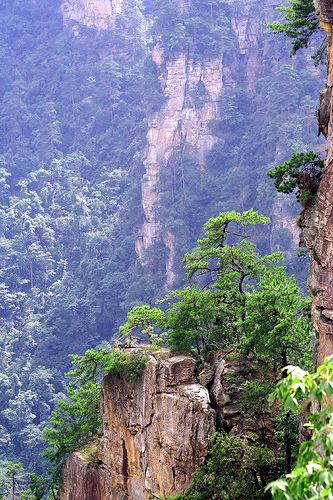|
|
Zhangjiajie National Park, Ulinyuanya Peak, Dayong Town, Mt. Kunlun, Village Of Yellow Lion, China
|
After the Chinese Civil War, mainland China saw a dramatic improvement in life expectancy, leading to an explosion in population. A series of disruptive socioeconomic movements started in the late 1950s with the Great Leap Forward and continued in the 1960s with the Cultural Revolution. The Great Chinese Famine resulted in an estimated 30 to 36 million deaths. With the death of its first generation Communist Party leaders such as Mao Zedong and Zhou Enlai, the PRC began implementing a series of political and economic reforms advocated by Deng Xiaoping that eventually formed the foundation for mainland China's rapid economic development starting in the 1990s.
Post-1978 reforms in mainland China have led to some relaxation of control over many areas of society. However, the PRC government still has almost absolute control over politics, and it continually seeks to eradicate what it perceives as threats to the social, political and economic stability of the country. Examples include the fight against terrorism, jailing of political opponents and journalists, custody regulation of the press, regulation of religion, and suppression of independence/secessionist movements. In 1989, the student protests at Tiananmen Square were violently put to an end by the Chinese military after 15 days of martial law. In 1997, Hong Kong was ceded to the PRC by the United Kingdom, and in 1999, Macau was handed over by Portugal.
Since 1949, mainland China is administered by the People's Republic of China—a one-party state under the leadership of the Chinese Communist Party—while the island of Taiwan and surrounding islands are administered by the Republic of China—a democratic multi-party state. After the founding of the People's Republic in 1949, both states claimed to be the sole legitimate ruler of all of China. After the Kuomintang retreat to Taiwan in 1949, the Republic of China had maintained official diplomatic relations with most states around the world, but by the 1970s, a shift had occurred in international diplomatic circles and the People's Republic of China gained the upper hand in international diplomatic relations and recognition count.
In 1971, under UN resolution 2758, the representatives of Chiang Kai-shek to the United Nations were expelled from the intergovernmental organization. With the expulsion of the representatives, and effectively the Republic of China, the representatives of the People's Republic of China were invited to assume China's seat on the UN Security Council, the UN General Assembly and other United Nations councils and agencies. Later attempts by the Republic of China to rejoin the UN have either been blocked by the People's Republic of China, which has veto power on the UN Security Council, or rejected by the United Nations Secretariat or a United Nations General Assembly committee responsible for the General Assembly's agenda.
|
|









